Thuja "Reingold": description of the variety, planting and care rules
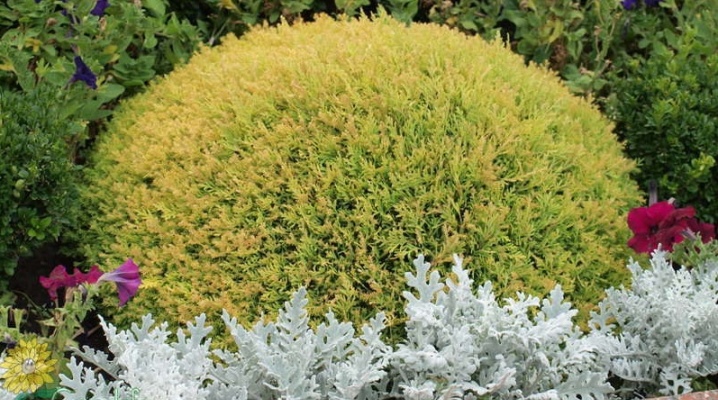
Currently, landscape design has become very popular. Every owner or hostess dreams of turning their unremarkable courtyard into an object of admiration. For this, all kinds of plants are used that only can grow in our climatic conditions. The most widespread and popular is thuja western "Reingold".

Description
This variety:
- has a height of about 3 m;
- slow growing;
- long-term (about 200 years);
- considered evergreen.
The leaves are bright yellow, and in winter they take on a bronze tint. During fruiting, the twigs are strewn with rounded brown cones about 0.7 cm in diameter.
This species is well suited for growing in containers or pots installed on a terrace or gazebo. They can withstand severe frosts down to -35-39 °.
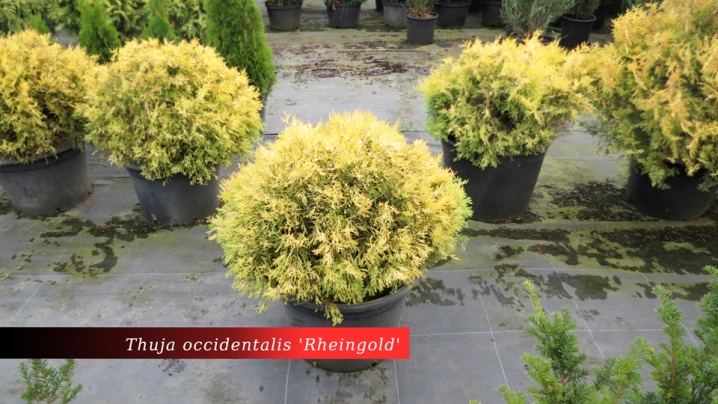
Breeding
The process itself is not very complicated, it is important to correctly and accurately follow all the rules and stages. In this case, you will be able to grow a healthy, beautiful bush. Consider 2 ways to breed this plant.
By sowing seeds
It should be noted that this planting method does not guarantee the preservation of varietal traits. The process itself takes a long time. For this growing method, you will need to purchase seeds of the required variety. They can also be obtained from woody buds from September to December. After receiving the seeds, you will need to prepare a small pot filled with soil. The soil must include peat and humus.
Before sowing, the seeds are kept in any material that absorbs water for 24 hours. Throughout the entire time, the material should be wet, but it should not float in water either. After the time has passed, the seeds are planted shallowly into the soil and covered with earth or sawdust. Watering is done as the soil dries out. Diffused lighting is desirable for these plants. In the spring, after the ground has completely warmed up, the sprouts are transplanted outside.
There is another way to germinate seeds that has a higher success rate. In this case, the extracted or purchased seeds are stored in a cool place until the moment when the snow completely covers the entire soil. The seeds must be buried in a snowdrift and left there until spring. In the first days of March, the seed is planted in the ground on the site, observing a distance of at least 10 cm.Up to 3 years of age, the sprouts must be watered abundantly until they get stronger and reach a height of 50 cm.For 4 years, the plant is transplanted to a permanent place dislocation.
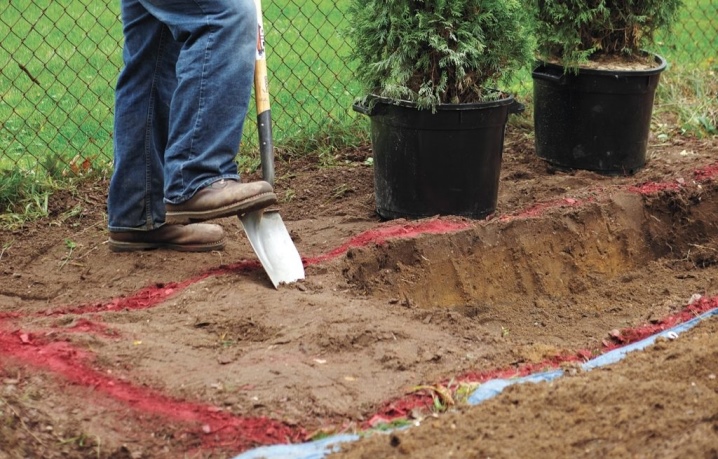
Cuttings
This method will help preserve all varietal characteristics. Choose good cuttings: they don't have to be very young or old. The stalk should be strong and mature, about 10–20 cm long. Adult branches (2–3 years old) may be suitable.
At the beginning of summer, a branch of 25–40 cm should be separated from the main bush, keeping the heel. The prepared stalk from below must be cleaned of needles and small branches, and then immediately immersed in a vessel with a growth stimulator for 12 hours. It is advisable to land in a vessel with light loose soil, which should include:
- turf;
- sand;
- peat.
Cuttings are deepened into the ground by about 3-4 cm at an angle of 60 °, covered with foil and sprayed from time to time. When the sprouts have taken root, the film can be removed. In the fall, they are transplanted into open ground.
For the winter they cover with fallen leaves, sawdust, spruce branches, and in the case of bitter frosts, with a film or other material.
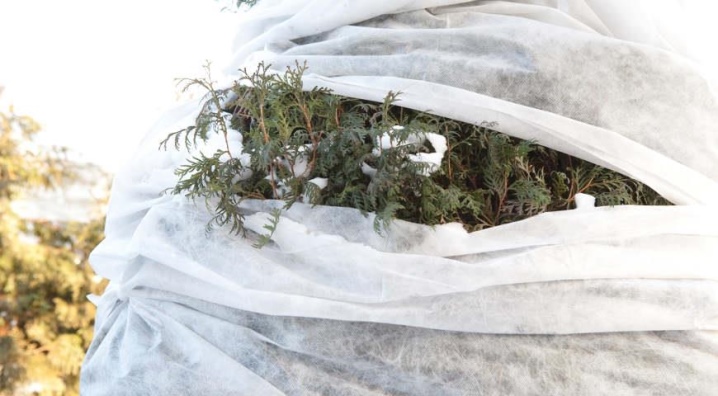
Seat selection
For good growth, such a culture will require an open sunny space, then its needles will be a rich golden color. In the presence of partial shade, the color will be less bright, and the needles may begin to thin. The landing site must be protected from strong gusts of wind and drafts. The selected area should not have a high level of groundwater, but this problem can be solved with a small embankment. The place must be carefully prepared before landing, namely:
- clean from household waste and metal;
- dig well;
- loosen and level the soil.
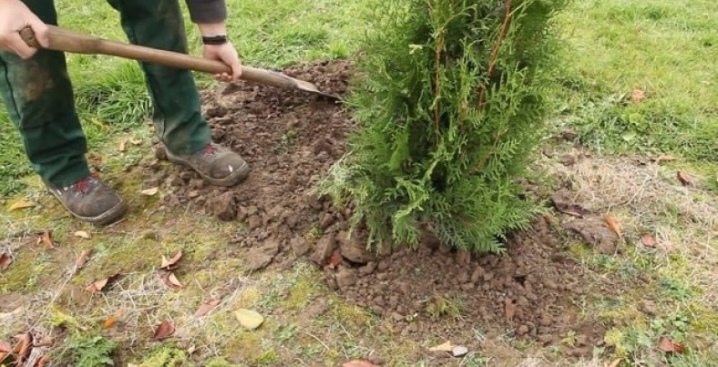
Planting a plant
The best time to transplant a plant to a permanent place is spring. Ideally - late April - early May, when the ground is fully warmed up and severe frosts are not expected. It is best to plant from pots in a pre-prepared hole, the size of which should correspond to the size of the root system. The dimensions and depth of the pit depend on the size of the seedling.
When planting several plants, it should be remembered that there should be 2 seedlings per 1 running meter of land. Before planting a plant in a hole, you need to briefly place it with its roots in water so that the soil is saturated with water. After that, the thuyu is sent to a new place of residence. The seedling is placed in the middle of the hole, and the free space is covered with the remnants of the earth and the soil around is compacted, leaving the root cheek at ground level.
After planting, the plant must be watered abundantly for 3-4 days.
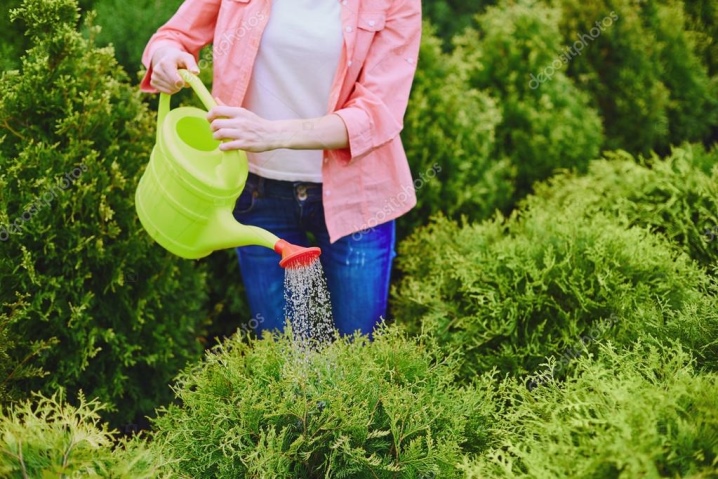
Outdoor care
This plant does not require excessive care, weekly watering is enough, using 10-50 liters of liquid per tree, depending on the size. On especially hot days, sprinkling in the morning or evening will not be superfluous. The day after watering, you need to loosen the soil without damaging the roots of the plant. Then add chopped bark or dry peat.
Top dressing
The first 3 years of life, the plant does not need feeding. After that, it is permissible to use humus once a year in the spring, and in the summer - a complex mineral fertilizer. This will be enough for the correct growth of the bush.
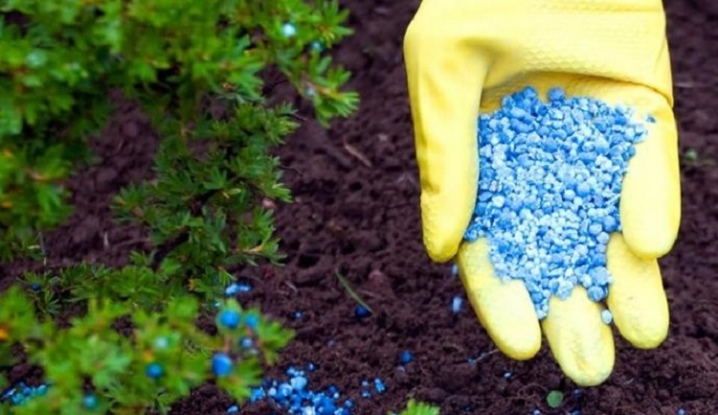
Pruning
Since, due to its slow growth, this plant has a dense crown with the correct shape, it does not need to be trimmed regularly. All that is needed is sanitary pruning, which removes broken branches and damaged shoots.
Preparing for winter
Adult thuja tolerate low temperatures well, frozen shoots recover quickly.
Young seedlings need shelter, they must be protected with covering material and covered with dry leaves on top.
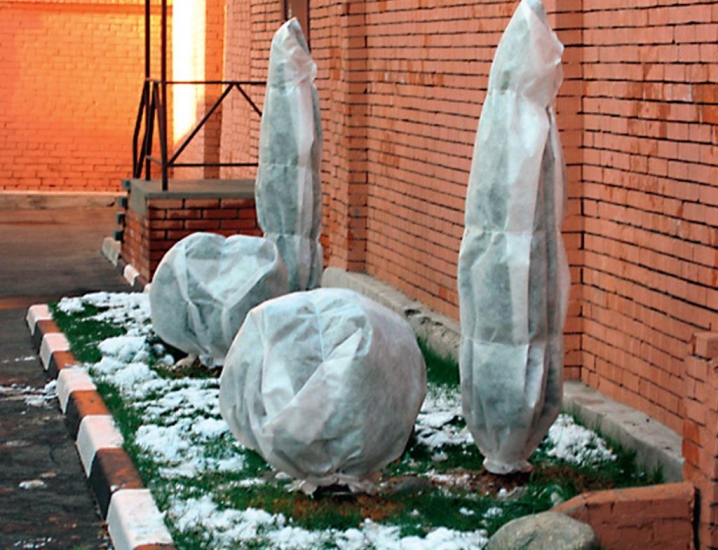
Diseases and pests
This type of plant is distinguished by good resistance to diseases and pests. However, he also has enemies. Let's consider the most common ailments.
- Fungus. Looks like a dark spot that appears on young shoots. If found, it is necessary to remove the affected shoots and treat with an antifungal solution.
- Drying of shoots. As a rule, this is due to a lack of useful elements. In this case, the shoots can dry out and fall off. The solution to this problem will be an urgent feeding of the plant with a product containing copper and iron in its composition.
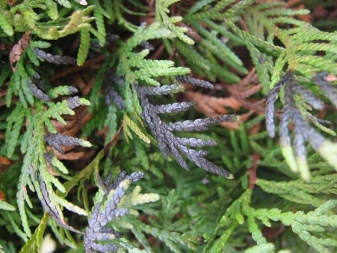
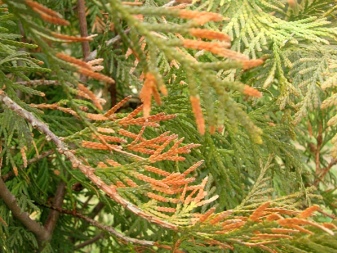
In addition to diseases, there are pests that pose a considerable danger.
- Thuya false shield Is a small insect that looks like a shield. If such a parasite has settled on a tree, it will become pale, yellow spots will appear. Any broad-spectrum insecticide can be used to combat.
- Speckled moth. In the event that such a parasite has settled on a plant, it will begin to very quickly become covered with brown spots, and the top of the tree begins to die off. To save the plant, it is necessary to process it as soon as possible with a composition containing a pyrethroid.
- Thuvaya aphid. These parasites settle on the needles and suck out the juices. As a result, the needles crumble. In case of untimely treatment, the plant may die. It is necessary to carry out the treatment with insecticides.
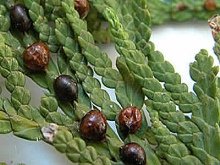
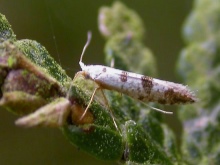
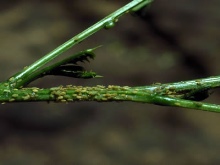
Beneficial features
In addition to its beautiful appearance, this thuja (like all other related species) has a useful purpose. It contains a large amount of essential oil, which is used in medicine and perfumery. In medicine, it is used to treat bacterial and fungal diseases, as well as to fight some viruses.
Alcohol tincture of pine needles is used in the treatment of cystitis, prostatitis and prostate adenoma. And also it is used in the reduction of papillomas, warts and callous formations. To prepare such a wonderful medicine, you will need to pour 3 tablespoons of chopped thuja needles with a glass of alcohol. Infuse for 2 weeks, shaking the contents daily. Store in a dark place.
Description of the plant in the next video.



































































The comment was sent successfully.